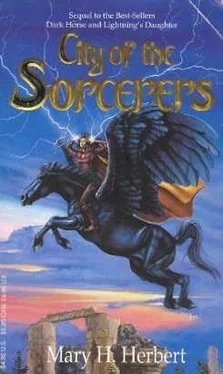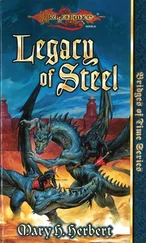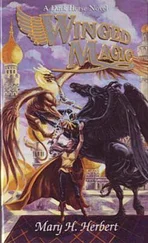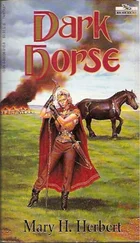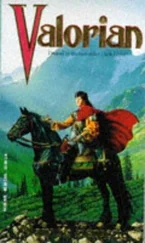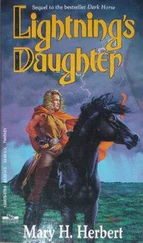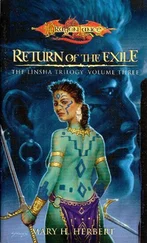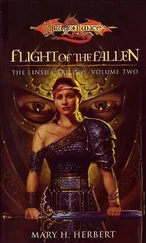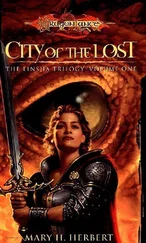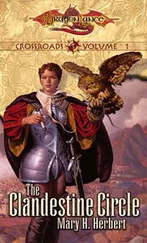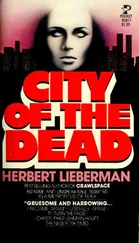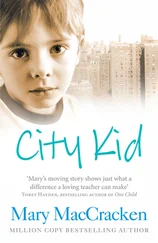Her mother was sitting on a leather stool with her beloved Hunnuli mare, Nara, and Nara’s filly, Demira, standing just behind her. The children, sitting in a semicircle around her, watched with rapt attention while the sorceress wove the tale of Valorian with magic, words, and images. She used dust from the ground and smoke from a cooking fire to form small pictures in the air before her of Valorian and his black horse, Hunnul. Just beneath the skin of her right wrist, a diamond splinter, the symbol of a full magic-wielder, glowed red with power and emotion.
“Valorian took Hunnul’s soft muzzle in his hands and closed his eyes to begin the spell,” Gabria was saying. She moved her images to replicate the words.
Kelene was pleased. She had come in time for her favorite part, where Valorian teaches his stallion to communicate. Gabria glanced up and smiled at her as she joined the group; Kelene smiled tentatively back. She sat down beside Tam and reached out to scratch the white cat loafing on Tam’s lap.
Kelene soon became so engrossed in the story she did not notice Nara’s filly, Demira, sidle up behind her. While the girl listened in wonder, Demira lowered her nose to a handspan away from Kelene’s back, sighed contentedly, and went to sleep.
The sound of hooves ringing on stone echoed around the’ long line of clansmen as they rode in single file down the narrow defile. The sun had dropped low enough to leave the canyon in cool shade, which was a welcome relief after the heat of the valley, but no one seemed inclined to remark on it or on the beauty of the variegated colors of red and brown in the smooth stone around them. They were too busy looking ahead or nervously eyeing the high, enclosing walls over their heads.
Before long, the Dangari rider led them out into the wider end of the canyon where the sun slanted down on the eastern wall and a light breeze riffled the patches of weeds and grass. The mound sat in lonely solitude, its crown trampled and flattened from the accident the day before. Off to the right side, vultures were flocking over the carcass of the horse, and a small pack of wild dogs left their meal to dash off into the rocks. The smell of corruption filled the air.
The clansmen filed in and reined to a halt in a circle around the mound. Silently they studied it: the oblong shape, the weed-grown slopes, the summit that rose over their heads.
“Well?” lord Athlone said to a priest in red robes. “What do you think of it?”
The man, a white-haired, fierce-eyed old whiplash of a Jehanan, dismounted without answering and stalked up to the top of the mound. He walked the length of the top from east to west, poked and prodded around the hole made by Moreg’s horse, and pulled up some more clumps of grass to study what lay beneath. At last he straightened.
“It is a burial mound,” he pronounced, and a babble of excited, wondering voices burst from the watching crowd.
“Whose is it?” several asked loudly.
“Why is it out here in this forsaken place?” another man shouted.
“May we open it?” others demanded.
Ordan, the priest, held up his hand to quiet them. He was the oldest man in the clans and well-respected for his wisdom and service to Sorh, god of the dead. The men quieted immediately. “I cannot answer all those questions at once,” he snapped. “This mound appears to be very old. That’s all I can tell you without further study.”
“Will lord Sorh be angry if we open it?” Koshyn asked.
“The god of the dead will not be angered if the proper prayers are said and the contents are not disturbed,” Ordan informed them.
“It shall be done!” said Lord Athlone. And with that everyone dismounted and set to work. The horses were led away and picketed at the far end of the box canyon. The men who had brought spades set to work digging at both ends of the mound. Other men cleared away the weeds and grass on the slopes and on the top, looking for any thing-a marker, a sign, a plaque—that would tell them who was buried in this grave.
By clan tradition that dated back hundreds of years, burial mounds of this size were usually built only for special purposes. Sometimes, as in the case of the massacred Corin clan, a mound would be built to bury a large number of people, or for a highly respected priest. Usually, though, the big mounds housed a dead chieftain and all the possessions he would need to maintain his honor and dignity in the realm of the dead. Clan lords had been known to be buried with their horses, dogs, weapons, clothes, household goods, gold, and other personal belongings. If there was a chief within this lone mound, there could be many things in the inner chamber and maybe an invaluable chance to learn more about the clans’ past.
With a strength fueled by excitement and curiosity, the clansmen worked feverishly to clear the mound. Rafnir, still sore from his fall in the race, helped pull weeds and clumps of grass. He grinned at his father when Sayyed paused from shoveling to wipe the sweat from his forehead.
“We could have done this much faster with magic,” Rafnir suggested.
Sayyed leaned on his shovel and said, “Yes, but we don’t really know what’s under there. We could damage it with a misplaced spell.”
“And I suppose,” Rafnir added, still grinning, “the others would resent being left out of the fun of all this hard work.”
“You’re learning,” Sayyed said and went back to digging.
It wasn’t long before the slopes were stripped to the dirt and the roof of the burial chamber was exposed.
“Look at this,” Ordan said to Lord Athlone. He pointed to the wooden beams that still lay partially covered with dirt. “This is older than I thought. Maybe two hundred years. Whoever built this didn’t cap the inner chamber with stone as we do now. This is only a timber-framed roof. It’s a wonder that horse didn’t crash all the way through.”
The Khulinin chief squatted down to take a closer look. He saw immediately what Ordan meant. The thick, square beams had once supported a slightly angled roof of wooden planks, bur time and the damp earth had rotted away the planks and the covering cap of soil had settled down on the supporting beams. The beams themselves were soft and crumbling. The packed earth around them seemed to be the only thing holding the timbers together. “Maybe we should move most of the men off the top,” he suggested.
Just then, a shout from one end of the mound drew everyone’s attention, and Athlone and Ordan hurried down to see what had been found.
Sayyed, Rafnir, Koshyn, and several other men were clustered around a large hole they had dug into the slope of the eastern end. “I think we found the entrance,” Sayyed shouted.
All the men dropped what they were doing and gathered close by to watch as the dirt was carefully removed from a large area around the initial hole. When they were finished, the workers stood back to show what they had discovered.
Three stone steps were laid into the ground down to a doorway into the burial chamber. The entrance was of stone with two carved stone pillars to either side of a narrow stone door. There were no handles, handholds, finger holes, or latches of any kind on the door and nothing to indicate who lay within. The stone on the door was perfectly blank.
“That’s odd,” remarked Ordan. The old priest leaned forward until his wispy white beard was inches away from a dirt-encrusted pillar. “Give me your dagger,” he said to no one in particular and stuck out his hand. Lord Athlone obliged him by handing over his own polished blade.
Quickly and carefully Ordan began to scrape and scratch away the soil clinging to the stone. In just a few moments he had cleaned off several tunic markings cut into both pillars and two small, intricately inscribed marble tiles inset on both sides of the doorframe. “Interesting,” he muttered.
Читать дальше
